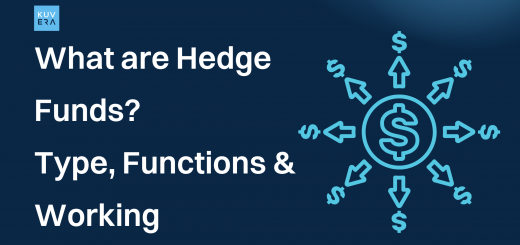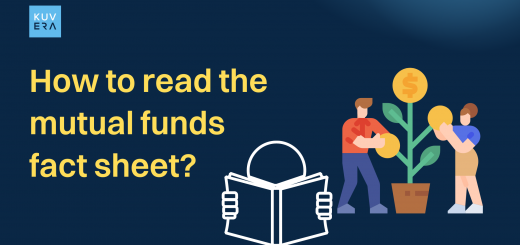There are many different types of mutual funds and they can be classified in a number of ways. There are five major ways to classify mutual funds, these are based on:
- Organisation structure
- Underlying Portfolio
- Management of Portfolio –
- Investment Objective
- Exchange Traded Funds
Let’s discuss each of these in detail.
1) Types of mutual funds based on organisation structure
There are several different types of mutual funds based on their structure. Some of the main types of mutual funds based on structure include:
Open-end mutual funds, which are the most common type of mutual fund. These funds have an unlimited number of shares, and investors can buy and sell shares directly from the fund at the fund’s net asset value (NAV) on any business day.
Closed-end mutual funds, which have a limited number of shares that are issued in an initial public offering (IPO). Unlike open-end mutual funds, closed-end mutual funds are traded on a stock exchange, and the price of the shares may be higher or lower than the fund’s NAV.
Interval Mutual Funds, these are a type of investment vehicle that combines features of both open-end mutual funds and closed-end funds. These funds offer periodic intervals, typically quarterly, during which investors can buy or sell shares. Outside of these intervals, buying or selling shares may be restricted or subject to limitations.
Unlike traditional open-end mutual funds, which allow investors to buy and sell shares at any time at the fund’s net asset value (NAV), interval funds provide a more controlled liquidity structure. The periodic intervals provide a chance for investors to access their investments without the need for a secondary market. The shares may be bought back by the fund at the NAV during these specific intervals.
Interval mutual funds often invest in less liquid assets, such as real estate, private equity, or other alternative investments. The structure of interval funds allows fund managers to have more flexibility in managing the underlying assets, as they are not bound by daily investor redemptions.
Investing in interval mutual funds can be suitable for investors seeking exposure to less liquid investments with potentially higher returns. However, it’s important to note that interval funds may have higher fees and limited liquidity compared to traditional open-end mutual funds.
Before investing in interval mutual funds, it is advisable to carefully review the fund’s prospectus, understand the specific terms and intervals, assess the risks involved, and consider your investment goals and time horizon. Consulting with a financial advisor can help determine if interval mutual funds align with your investment strategy and risk tolerance.
2) Types of mutual funds based on underlying portfolio
The types of underlying portfolio based on underlying portfolio are:
Equity schemes: Equity mutual funds invest in equity and equity related investment instruments. Long term capitalisation is the goal of equity funds. There are three main types of equity schemes. Watch our YouTube series on the different types of equity mutual funds.
- Large cap funds: These are funds that invest at least 80% of their portfolio in large cap stocks.
- Mid cap funds: These are funds that invest at least 65% of their portfolio in mid cap stocks
- Small cap funds: These are funds that invest at least 65% investment in small cap stocks.
Debt schemes: These are schemes that primarily invest in bonds and other debt related securities. There are many different types of debt funds. Click here to watch our debt mutual fund series where we explain 16 different types of debt funds.
Hybrid schemes: As the name suggest, these schemes invest in a mix of debt and equities securities. Read more about hybrid mutual fund schemes, here.
Money Market Instruments: Money market instruments mutual funds are investment vehicles that primarily invest in short-term debt securities known as money market instruments. These instruments typically have a maturity period of less than one year and are considered to be low-risk and highly liquid.
Money market instruments include Treasury bills, commercial papers, certificates of deposit, repurchase agreements, and short-term corporate bonds. These instruments are issued by governments, financial institutions, and corporations to meet short-term funding needs.
Money market mutual funds pool money from multiple investors and invest in a diversified portfolio of money market instruments. The objective of these funds is to provide capital preservation and generate stable income through investments in high-quality, short-term debt securities.
Multi Assets Mutual Fund: Multi-asset mutual funds, also known as asset allocation funds or balanced funds, are investment vehicles that provide diversification across multiple asset classes. These funds invest in a combination of stocks, bonds, and other asset classes such as cash, commodities, or real estate, with the goal of achieving a balance between risk and return.
The primary objective of multi-asset mutual funds is to provide investors with a diversified portfolio that can potentially deliver both capital appreciation and income. By spreading investments across various asset classes, these funds aim to reduce the risk associated with investing in a single asset class and provide more stable returns over the long term.
3) Types of mutual funds based on investment objective
In addition to the different types of investments based on asset class, there are also several different types of investments based on investment goals. Some common investment goals include:
Liquidity: Investors who want to protect their capital and preserve their purchasing power may choose investments that are considered to be low-risk, such as cash equivalents, short-term bond funds, or insured deposits.
Income: Investors who want to generate regular income from their investments may choose investments that pay dividends, such as stocks, real estate investment trusts (REITs), or high-yield bond funds.
Growth: Investors who want to grow their wealth over the long term may choose investments that have the potential for capital appreciation, such as stocks, real estate, or growth-oriented mutual funds.
The right type of investment will depend on the individual investor’s goals, risk tolerance, and other factors. It’s important for investors to carefully consider their investment objectives and do their research before making any investment decisions.
4) Types of mutual funds based on Management of portfolio
There are primarily three types of mutual funds based on the management of the portfolio
Actively Managed Funds
Actively managed funds are overseen by professional fund managers who actively make investment decisions based on market research, analysis, and their expertise. The fund manager aims to outperform a specific benchmark or achieve a specific investment objective. They actively buy and sell securities within the fund’s portfolio in an effort to generate higher returns. Actively managed funds typically have higher management fees due to the active management involved.
Passively Managed Funds (Index Funds)
Passively managed funds, also known as index funds, aim to replicate the performance of a specific market index, such as the S&P 500 or the Nifty 50. Instead of active stock selection, these funds hold a portfolio of securities that mirror the composition of the chosen index. The fund manager’s role is to ensure that the fund maintains the same weightings and allocations as the index it tracks. Passively managed funds tend to have lower expense ratios compared to actively managed funds.
5) Exchange-Traded Funds (ETFs)
Exchange-Traded Funds are similar to index funds in that they aim to replicate the performance of a specific index. However, ETFs are listed and traded on stock exchanges, allowing investors to buy and sell shares throughout the trading day at market prices. ETFs offer flexibility and liquidity, as they can be bought and sold like individual stocks. They also have expense ratios similar to or lower than index funds.
Interested in how we think about the markets?
Read more: Zen And The Art Of Investing
Watch/hear on YouTube:
Start investing through a platform that brings goal planning and investing to your fingertips. Visit Kuvera.in to discover Direct Plans and Fixed Deposits and start investing today.
#MutualFundSahiHai #KuveraSabseSahiHai!











